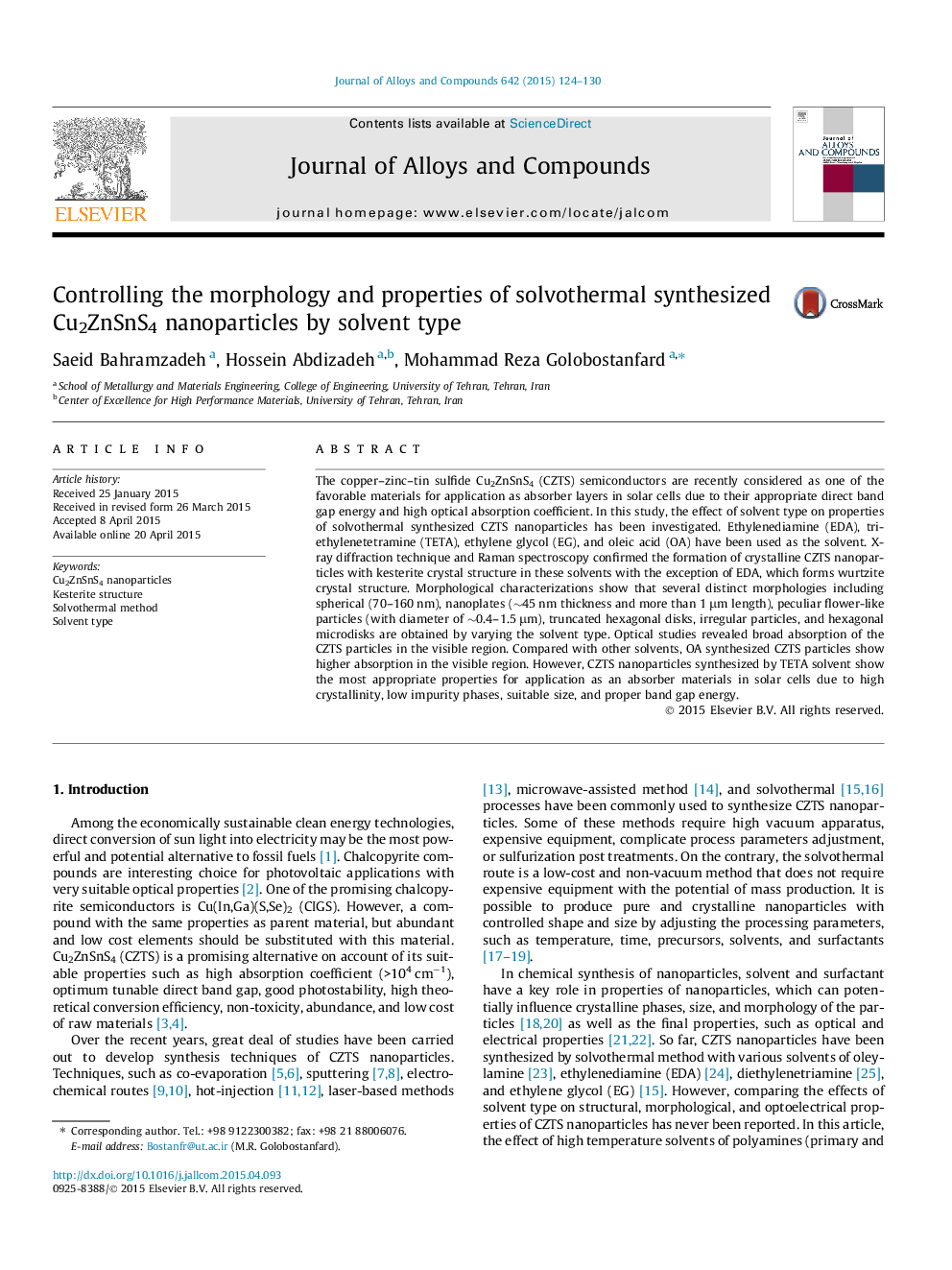| Article ID | Journal | Published Year | Pages | File Type |
|---|---|---|---|---|
| 1608888 | Journal of Alloys and Compounds | 2015 | 7 Pages |
•CZTS nanoparticles are fabricated by solvothermal method with different solvents.•Different morphologies are achieved by EDA, TETA, EG, and OA solvents.•Property and chelating ability of the solvents have a key role on nanoparticles formation.•TETA and OA are strongly recommended for solar cell applications.
The copper–zinc–tin sulfide Cu2ZnSnS4 (CZTS) semiconductors are recently considered as one of the favorable materials for application as absorber layers in solar cells due to their appropriate direct band gap energy and high optical absorption coefficient. In this study, the effect of solvent type on properties of solvothermal synthesized CZTS nanoparticles has been investigated. Ethylenediamine (EDA), triethylenetetramine (TETA), ethylene glycol (EG), and oleic acid (OA) have been used as the solvent. X-ray diffraction technique and Raman spectroscopy confirmed the formation of crystalline CZTS nanoparticles with kesterite crystal structure in these solvents with the exception of EDA, which forms wurtzite crystal structure. Morphological characterizations show that several distinct morphologies including spherical (70–160 nm), nanoplates (∼45 nm thickness and more than 1 μm length), peculiar flower-like particles (with diameter of ∼0.4–1.5 μm), truncated hexagonal disks, irregular particles, and hexagonal microdisks are obtained by varying the solvent type. Optical studies revealed broad absorption of the CZTS particles in the visible region. Compared with other solvents, OA synthesized CZTS particles show higher absorption in the visible region. However, CZTS nanoparticles synthesized by TETA solvent show the most appropriate properties for application as an absorber materials in solar cells due to high crystallinity, low impurity phases, suitable size, and proper band gap energy.
